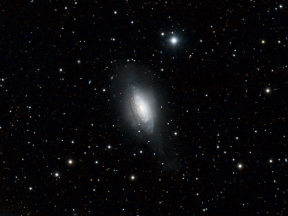
NGC 3521, "flocculent" spiral galaxy in Leo456 viewsNGC 3521 is termed a "flocculent" spiral galaxy because it has patches or clumps of stars breaking up the continuity of the spiral arms. Self-propagating star formation is thought to account for the patchiness. The galaxy lies about 26 million light-years away from us.May 24, 2022
|
|
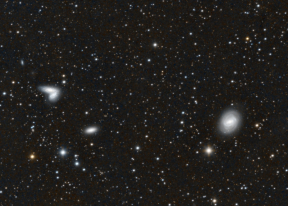
Messier 58 and the Siamese Twins444 viewsM58 is a barred spiral galaxy about 62 million light-years away in the constellation Virgo. The Siamese Twins, NGC 4567 and 4568, are colliding spiral galaxies about 60 million light-years away, in the early stages of merging; they are also nicknamed the Butterfly Galaxies.May 24, 2022
|
|
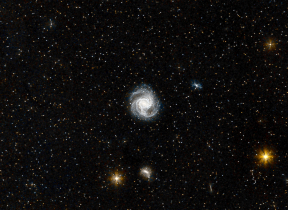
Messier 61 - Face-on Barred Spiral Galaxy in Virgo435 viewsOne of the largest members of the Virgo Cluster, M61 is a starburst galaxy, i.e. it has an unusually high rate of star formation, with an active galactic nucleus that features a massive nuclear star cluster and a supermassive black hole. It is about 53 million light-years away from Earth.May 24, 2022
|
|
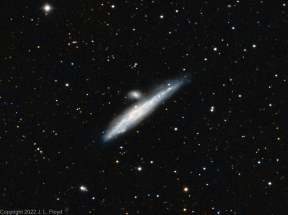
NGC 4631, The Whale Galaxy424 viewsA barred spiral galaxy in the constellation Canes Venatici. Contains a central starburst - a region of intense star formation. The "calf" - the nearby dwarf galaxy - is NGC 4527.May 14, 2022
|
|
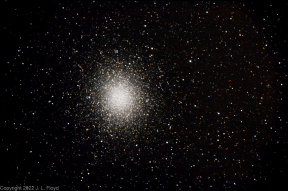
NGC 5139 - Omega Centauri Cluster456 viewsGlobular cluster in Centaurus, 17,090 light-years away. The largest-known globular cluster in the Milky Way, estimated to contain approximately 10 million stars, and a total mass equivalent to 4 million solar masses.May 13, 2022
|
|
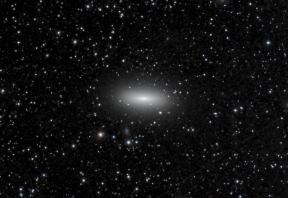
NGC 3115 - Lenticular Galaxy in Sextans485 viewsFormerly thought to be an elliptical galaxy, now considered a lenticular (lens-shaped) galaxy because it has a disk and a central bulge of stars, but no discernible spiral structure. Distance from Earth is about 32 million light years. It is several times larger than the Milky Way galaxy.Mar 27, 2022
|
|
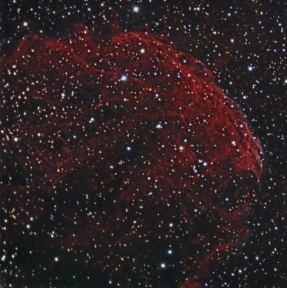
IC443 - Jellyfish Nebula412 viewsA galactic supernova remnant in Gemini, about 6000 light-years away.Feb 09, 2022
|
|
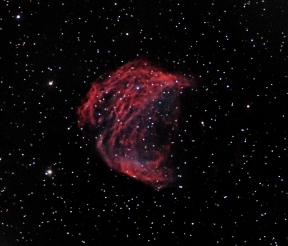
Medusa Nebula (Sharpless 2-274)420 viewsPlanetary Nebula in Gemini. Discovered in 1955, first thought to be a supernova remnant, but Soviet astronomers in 1971 determined it to be a planetary nebula.Feb 09, 2022
|
|
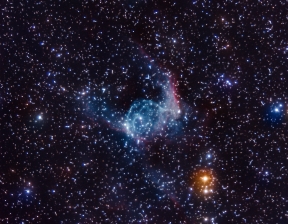
NGC 2359 - Thor's Helmet435 viewsAn emission nebula in the constellation Canis Major; about 12,000 light-years away. Consists largely of interstellar gas swept up by the central star, and partly of material from the star itself, which is an extremely hot, massive Wolf-Rayet star in a short-lived pre-supernova stage. Feb 02, 2022
|
|
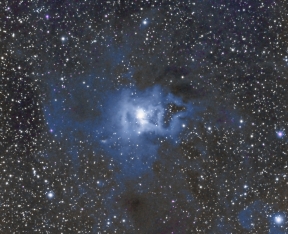
NGC 7023 - the Iris Nebula in Cepheus435 viewsA bright reflection nebula in the constellation Cepheus, about 1300 light-years away. Actually NGC 7023 is the star cluster inside the nebula, which is properly designated LBN 487.Jan 31, 2022
|
|
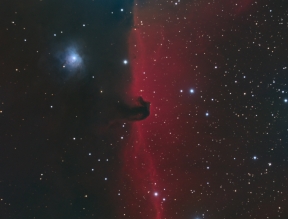
The Horsehead Nebula in Orion435 viewsThe Horsehead Nebula, Barnard 33, is a dark nebula, silhouetted against the bright emission nebula IC 434. The large blue object to the left of IC 434 is a reflection nebula, NGC 2023. They are all found near the star Alnitak, the easternmost star in Orion's belt, which is off the frame to the right, and are 1400 light-years from Earth.Jan 18, 2022
|
|
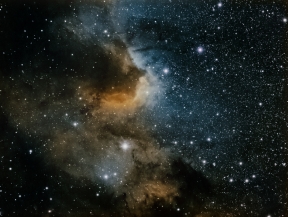
Sharpless 2-155 - The Cave Nebula513 viewsA narrowband (Hubble Palette) view of an emission nebula in Cepheus; part of an ionized HII region within a larger complex containing emission, reflection and dark nebulae. About 2400 light-years away, on the edge of the Cepheus molecular cloud.Dec 22, 2021
|
|
| 1722 files on 144 page(s) |
 |
 |
 |
 |
 |
 |
 |
35 |  |
 |
 |
 |
 |
 |
|

|